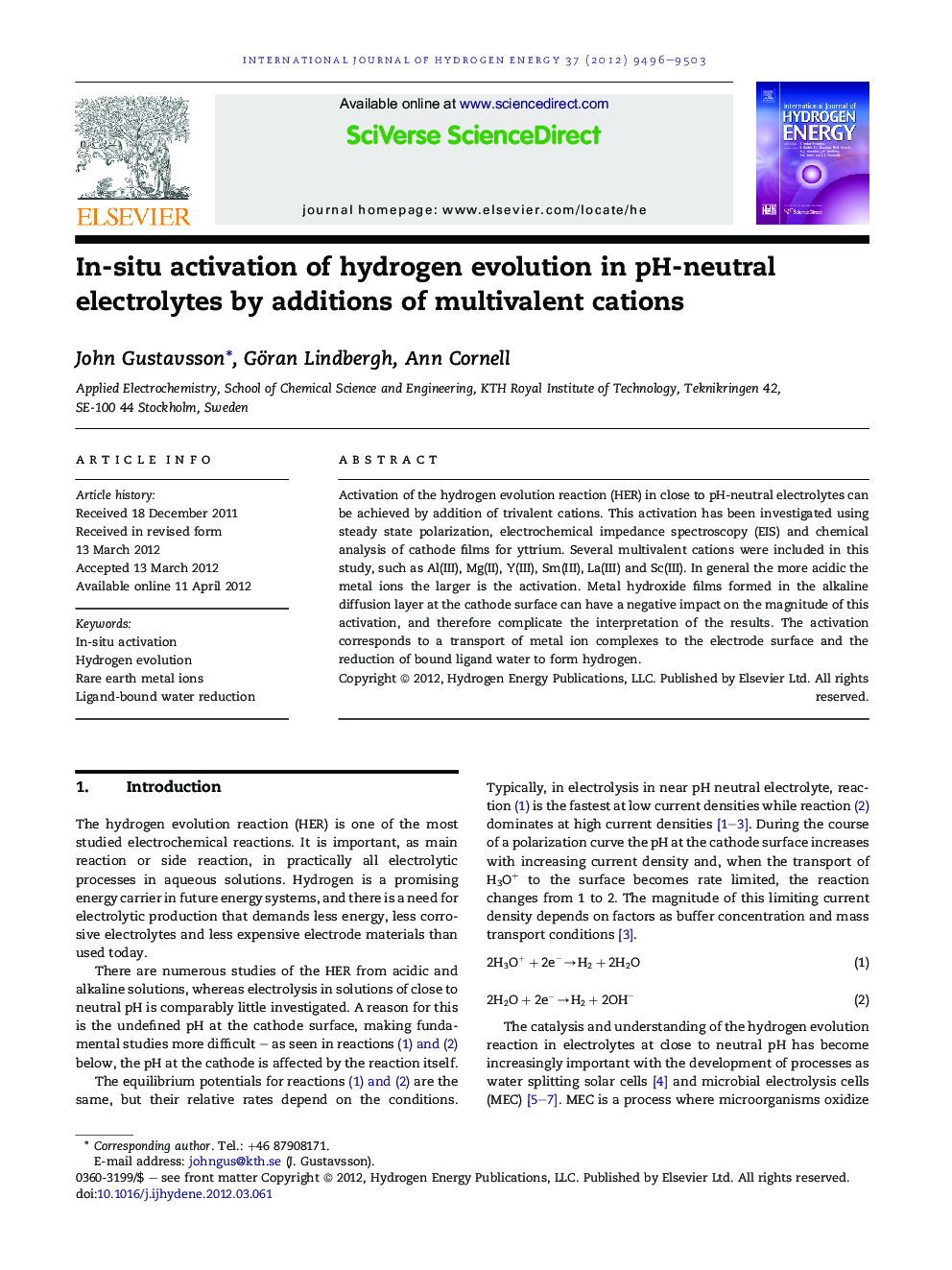| Article ID | Journal | Published Year | Pages | File Type |
|---|---|---|---|---|
| 1271262 | International Journal of Hydrogen Energy | 2012 | 8 Pages |
Activation of the hydrogen evolution reaction (HER) in close to pH-neutral electrolytes can be achieved by addition of trivalent cations. This activation has been investigated using steady state polarization, electrochemical impedance spectroscopy (EIS) and chemical analysis of cathode films for yttrium. Several multivalent cations were included in this study, such as Al(III), Mg(II), Y(III), Sm(III), La(III) and Sc(III). In general the more acidic the metal ions the larger is the activation. Metal hydroxide films formed in the alkaline diffusion layer at the cathode surface can have a negative impact on the magnitude of this activation, and therefore complicate the interpretation of the results. The activation corresponds to a transport of metal ion complexes to the electrode surface and the reduction of bound ligand water to form hydrogen.
► Trivalent cations to activate the HER in close to pH-neutral electrolytes. ► Reduction of bound ligand water to form hydrogen. ► The degree of activation correlates to the acidity of the cation. ► A Warburg resistance appears in EIS spectra when activating the HER by cations. ► The growth of hydroxide films complicates the interpretation of polarization curves.
